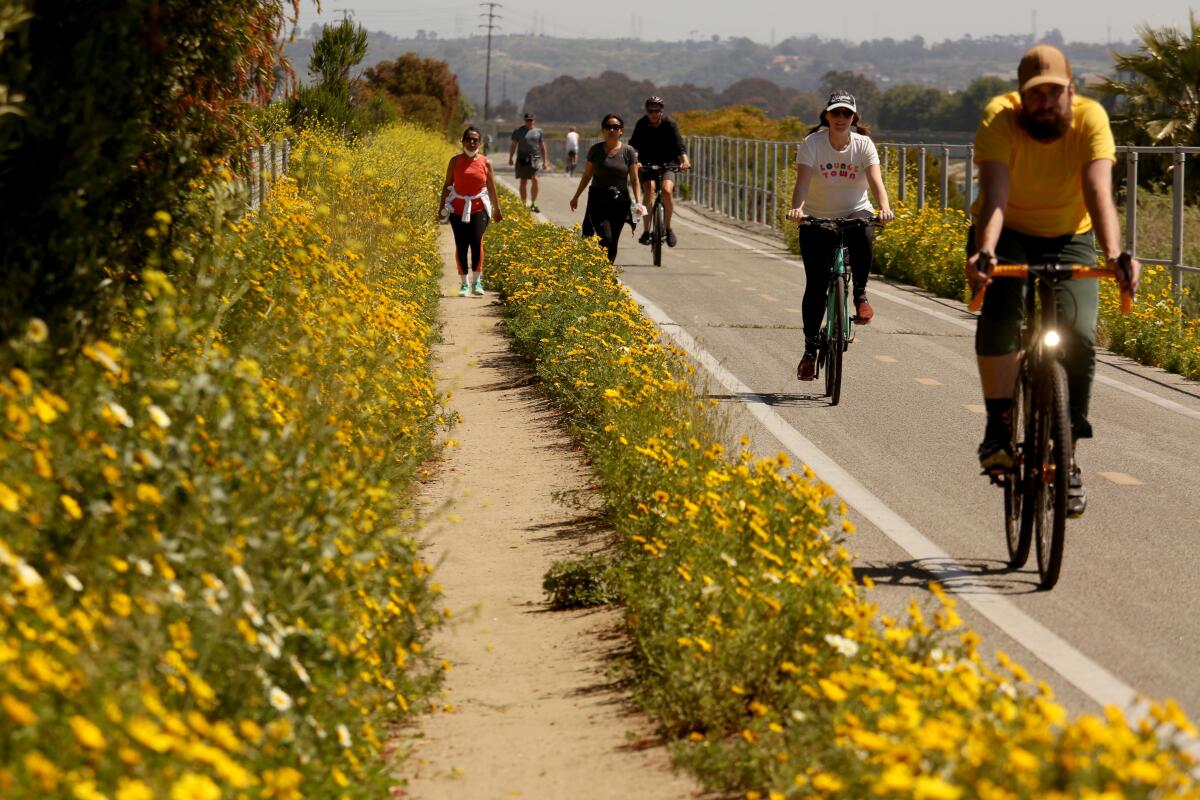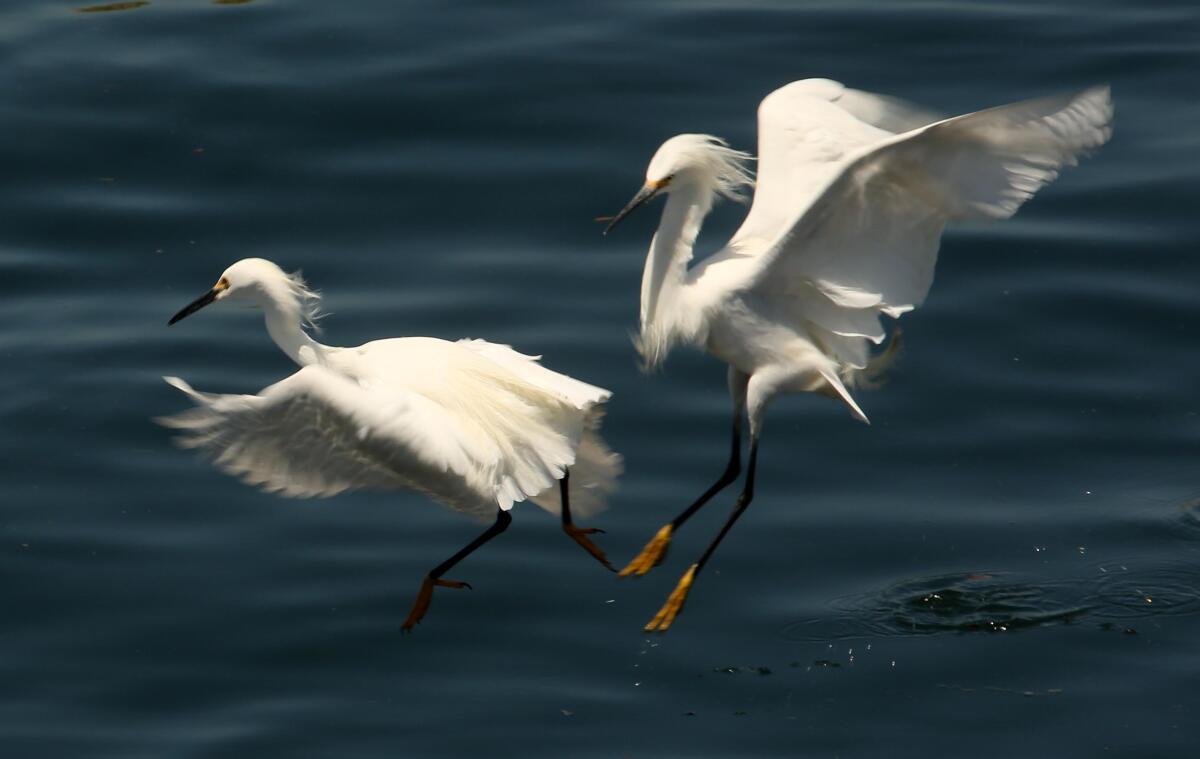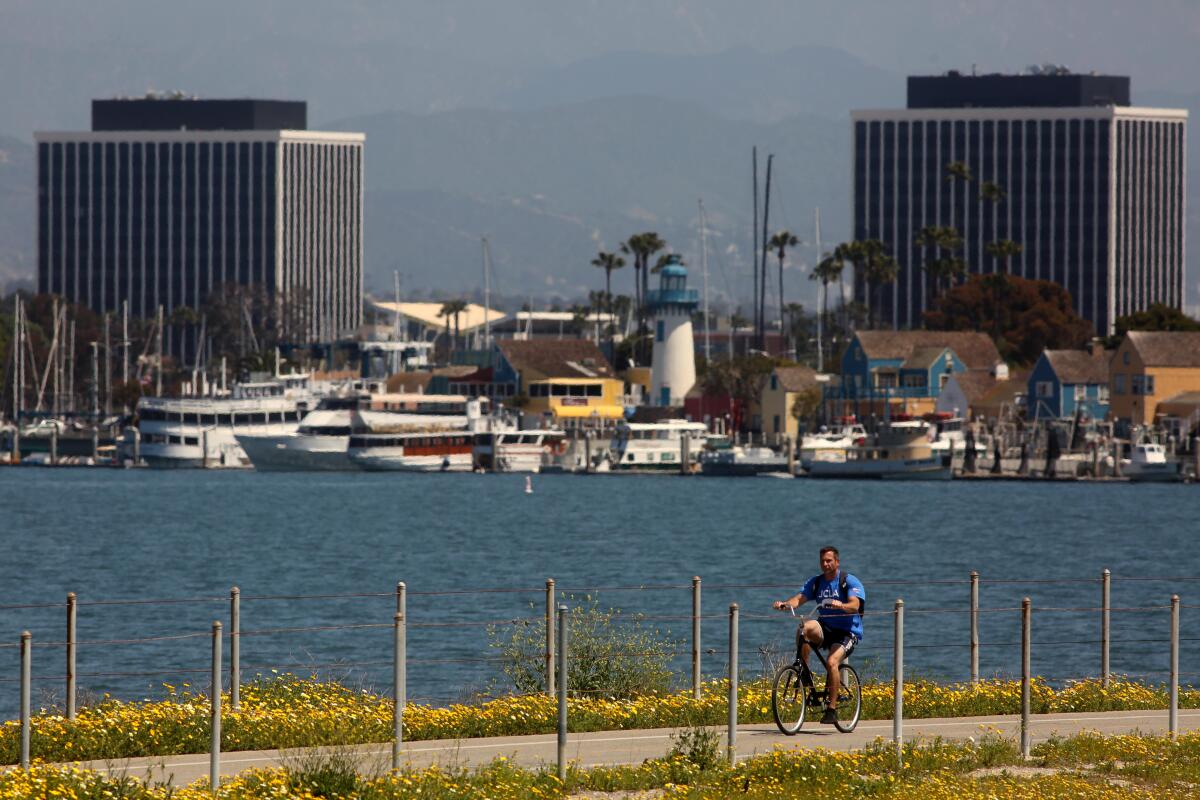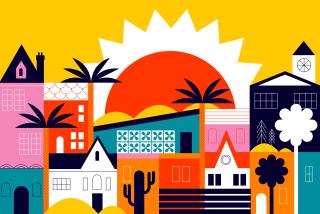Column: Feeling sad? Lethargic? Fearful? Happiness is just a bike ride away

At the beginning of the shutdown, I was overcome by a palpable sense of lethargy.
All I wanted to do was sleep in and eat toast.
I stopped running with my partner, because our usual route — the beach bike path in Venice and Santa Monica — is closed, barricaded by mounds of sand.
Even the charming walkways along the Venice canals are blocked; they are too narrow to maintain a safe distance should someone approach from the opposite direction.
For me, and I imagine for everyone else, the first month of the lockdown was a time of major mood swings and a bizarre feeling of dislocation.
From the safety of our living rooms, we saw hellish scenarios in nursing homes and hospitals, where patients with COVID-19 struggled for their lives, where front-line health professionals raged and despaired about the lack of protective equipment.

As I watched from my couch, I was horrified, outraged … and sleepy.
And then, sometime around Week 4, I woke up. I got the bikes out of the garage. On two wheels, after all, it’s easy to practice social distancing. My 10-year-old niece and I strapped on our helmets and plunged into the world. We could not waste this glorious spring weather one more second.
Since we couldn’t ride at the beach, we explored Marina del Rey, the pleasure craft harbor that was conjured into existence out of wetlands in the 1950s and ’60s, a testament to the enduring need of humans to bend nature to their will.
We wove in and out of streets, alleys and dockside promenades. We fantasized about living in the fancy apartment buildings until we came home and looked up the rents. (Two bedrooms, two bathrooms for $6,100? Yeah, no.)
Sometimes we just rode in circles in the huge empty parking lot at the public boat ramps near the new Trader Joe’s. At the west end of Burton Chase Park, we discovered a colony of sea lions that has taken over some of the guest docks. We often stand behind the fence, a few yards from the sleek creatures, and just watch.
Seeing these smelly guys frolic and bark like puppies, roll around in their sleep and salute the sun propped up on their flippers with their eyes closed and noses pointed up has been more satisfying than any of the nature documentaries we’ve seen lately. (And we have seen a lot.)
One day this week, we watched as members of the nonprofit group Marine Animal Rescue tried to catch an injured sea lion that had fishing line wrapped around its neck. They’d been trying to remove it for months. Holding big nets, they slowly approached the animal in their yellow dinghy, but the sea lion once again spooked and slipped into the water out of reach.
A little farther south, we came upon the Ballona Creek bike path, which parallels the north side of Ballona Creek, a cemented channel surrounded by 600 acres of the city’s only remaining coastal wetlands. If you come north from LAX on Lincoln Boulevard, you will get an excellent view as you drive down the hill past Loyola Marymount University.

This glorious open space has been the subject of decades of strife — first, between conservationists and developers who wanted to build high-rise hotels and shopping centers, and now between two sets of environmentalists who have divergent views on how the wetlands should be managed.
Should the state embark on a decade-long, $250-million project to approximate what the wetlands might have looked like before humans desecrated them and nonnative species such as iceplant and mustard moved in?
Or should we make the best of what we have now? Burrowing owls seem to have accommodated themselves to the nonnative iceplant, after all, and one school of scientific thought holds that invasive species are not inherently destructive. Some, these scientists believe, can even be beneficial.
The battle over the future of Ballona wetlands is going to rage, as it always has, for years.
None of this should prevent us from enjoying to the fullest what is there now.
The bike path, for instance, runs for 6.5 miles, all the way from the beach to Culver City. At the moment, it is awash in glorious yellow daisies, mustard flowers and rosy iceplant blossoms.
At this weird moment in history, with an invisible virus making life hell for so many, I daresay that getting outside and communing with nature, where it can be done safely in a socially distanced way, is one of the best ways to regain a sense of well-being and optimism.
I defy you to wander around the wetlands, or get up close to a colony of frisky sea lions, and not be thrilled to be alive.
Twitter: @AbcarianLAT
More to Read
A cure for the common opinion
Get thought-provoking perspectives with our weekly newsletter.
You may occasionally receive promotional content from the Los Angeles Times.











